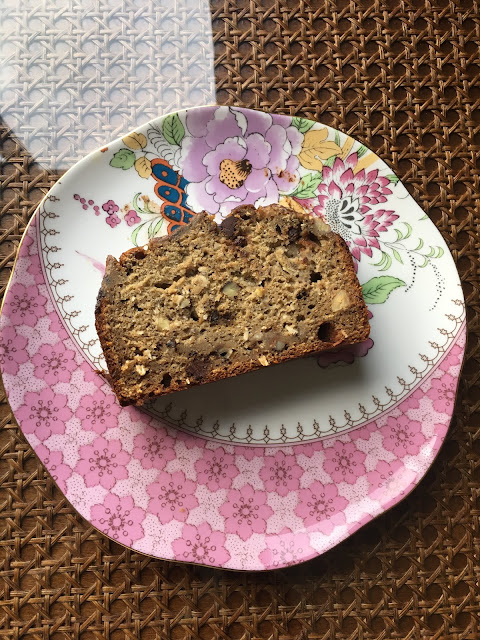Coconut Basbousa
When I was growing up, a leisurely pre-dinner walk in the early evening, through tree-lined streets criss-crossing the heart of Delhi, was something of a ritual for my parents. With his love of long walks, my father was always the enthusiastic initiator; my mother, the somewhat reluctant tag-along. If I were home with nothing else to occupy myself, I'd end up joining them.
Sometimes, we ventured in the direction of India Gate, which is magical by night-time, with its lights twinkling against the night sky. In the summer, we'd pass by Kwality ice-cream carts and jamun sellers sat on the road with wicker baskets overflowing with the dark berry. In the winter, they were replaced by hawkers selling freshly roasted groundnuts in their shells.
Other times, we ventured in the direction of Bengali Market, with its cluster of chaat and sweet shops. Even though it has been years since I've visited Bengali Market, the aroma of frying jalebis wafting through the market is still fresh in my mind.
Because of my parents' deep distrust of street food, I remained ignorant of the delights of Bengali Market's fabled chaat shops throughout my childhood. Over time, however, they came to allow occasional visits to sweet shops.
And so, every now and then, on our way home from our evening walk to Bengali Market, we'd stop by the crowded Bengali Sweet House. I'd be called upon to make excruciatingly painful choices from a vast array of sweets displayed behind glass shelves. Decisions made, one of the men behind the counter would disinterestedly weigh the sweets, arrange them haphazardly in a cardboard box, and pass them down to the billing counter, where cash and sweets exchanged hands. Sweets in hand, the journey home always felt longer than it should have. Once home, it took every ounce of self-control I had to resist polishing the entire box off before dinnertime.
My favorite Indian sweets have always been of the juicy, drenched-in-sugar-syrup variety. Rasgullas, jalebis, gulab jamuns - I adore them all equally. When I came across the recipe for coconut basbousa, a syrupy, Middle-Eastern sweet cake made from semolina, accompanied by images of basbousa sitting in a pool of syrup, my mind rewound instantly to memories of Bengali Market and its sweet shops.
I made a batch of basbousa this weekend. I enjoyed the bits of coconut in every bite, and plan to increase the coconut-semolina ratio the next time I venture to make this. Basbousa makes a good accompaniment to a cup of afternoon chai or coffee. But I certainly wouldn't put it in the same league as my favorite, syrup laden Indian sweets - with all the childhood memories attached to them, they'll always remain in a special league of their own.
Coconut Basbousa (serves 6-8) (recipe from here)
1 tablespoon tahina
½ cup ghee or 100 g, softened
1 tin sweetened condensed milk
1 teaspoon baking powder
2 cups semolina
1 cup desiccated coconut
1 cup water
For the syrup:
1½ cups sugar
1 cup water
1 teaspoon lemon juice
1 tablespoon orange blossom water
Method
Grease a 9 inch baking tin with the tahina.
Combine ghee, condensed milk and baking powder and stir well. Add semolina, desiccated coconut and water and stir until well combined.
Pour and level mixture into the prepared baking tin. Bake in a 190°C preheated oven for 35 minutes or until the top becomes golden in color.
Remove from oven and pour all over the cooled syrup. Set aside to cool into a room temperature, cut into diamond shape and serve.
To prepare the syrup: Add sugar and water to a saucepan. Bring to boil and simmer for 6-8 minutes. Remove from heat and stir in lemon juice and rosewater.
Notes: Instead of the ghee, I used 1 stick of butter, melted to make brown butter/homemade ghee, which lent the basbousa a nutty flavor.




Comments
Post a Comment